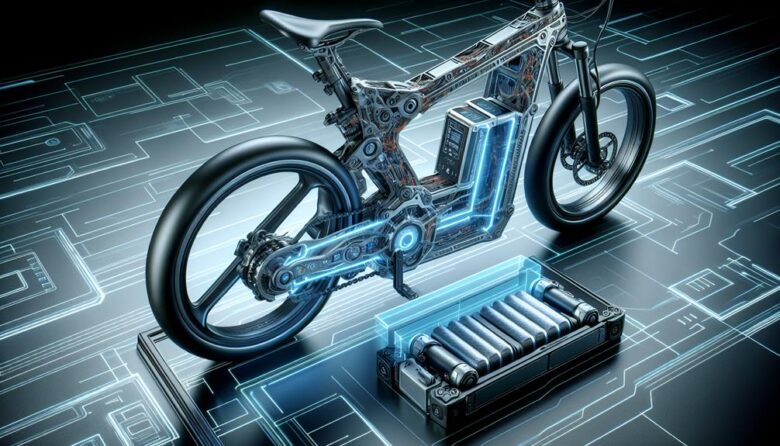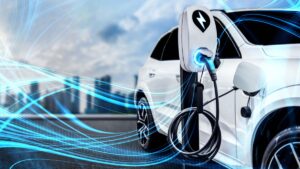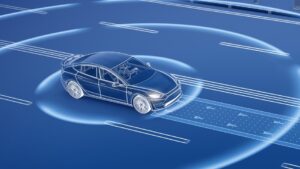As more people around the world look for eco-friendly ways to travel, electric bicycles (e-bikes) are becoming a popular choice for commuting and recreational riding. E-bike technology will continue to improve in the future, with new features that make them easier to use, faster, and more convenient. The next generation of e-bikes will change the way we think about cycling and personal transportation, with features such as longer battery life and new designs.
1. Advances in Battery Technology
Battery development is one of the key areas where e-bike technology needs to evolve. Most batteries currently used in electric bikes are lithium-ion batteries, which have made great strides in energy density, weight reduction, and charging speed. But battery technology is likely to make even greater strides in the future. Scientists are researching new designs and materials to improve battery life, charging speed, and overall performance.
Solid-state batteries, for example, are a promising advancement. Solid-state batteries differ from regular lithium-ion batteries because they use solid electrolytes instead of liquid electrolytes. This makes them safer, more powerful, and longer-lasting. As these technologies continue to develop, e-bikes will have longer ranges and shorter charging times, making them more suitable for daily commuting and long-distance riding.
2. Better Running Motor System
E-bike motors are also getting better. Most modern e-bikes have either hub motors or mid-drive motors, each with its advantages. A hub motor is integrated into the wheel hub for a smooth, quiet ride. A mid-drive motor, on the other hand, is located near the crankset and works better on different types of terrain.
In the future, e-bike motors will continue to improve in terms of power, efficiency, and fit with the bike design. Improvements in motor control technology, such as better sensors and algorithms, will make power delivery more precise and faster. This means riders will experience smoother acceleration, better ride quality, and better overall performance. In addition, we are working on making the motors smaller and lighter, which will make e-bikes look better and perform better.
3. Integrate Smart Technologies
Adding smart technology to e-bikes is another exciting new area of development. Future e-bikes may have better connectivity features to make riding more fun. This includes using smartphone apps, GPS navigation, and real-time performance tracking.
Smart e-bikes will have features such as customizable riding modes, allowing users to change settings such as power levels, speed limits, and more based on their riding needs and preferences. Advanced data analytics will also provide users with information about how they are riding, what repairs are needed, and the battery health, allowing them to better manage their e-bikes. Better connectivity also enables features such as anti-theft systems, remote diagnostics, and over-the-air updates to keep e-bikes safe and up to date.
4. Improved Safety Performance
Safety is a very important part of e-bike technology, and we will add new features to make it safer for both riders and pedestrians. In this area, new technology allows for better lighting systems, more advanced braking systems, and easier-to-see features.
For example, future e-bikes may have built-in LED lights that automatically change brightness based on riding speed and conditions. New brakes, such as regenerative braking, not only make parking easier but also extend battery life by converting kinetic energy into electrical energy. E-bikes may also have better stability control systems and collision avoidance technology, making riders safer and preventing accidents.
5. Design and Changes
E-bikes are changing to accommodate more riders and be used for more things. In the future, e-bike designs will be more flexible and changeable, allowing users to choose from a variety of styles, sizes, and configurations. E-bikes will be built with specific needs and preferences in mind, whether it’s commuting, hauling cargo, or off-road adventures.
New materials and manufacturing methods will allow for lighter, more durable, and more aesthetically pleasing e-bikes. This includes the use of carbon fiber, high-tech alloys, and modular components that can be easily modified or customized. As e-bikes become more popular, we can expect to see a wider range of designs and styles that fit the needs of different riders and urban environments.
6. Environmental Impact and Long-Term Viability
As e-bike technology continues to evolve, the damage they cause to the environment will become an even greater concern. Future e-bikes will be built with sustainability in mind, with a focus on reducing the carbon footprint created by making, using, and disposing of e-bikes.
They plan to build e-bikes from materials that are better for the environment and are launching a recycling program for batteries and other parts. E-bikes are becoming increasingly popular, and advances in renewable energy charging will help reduce overall transportation emissions and support global sustainability goals.
Conclusion
The next generation of e-bikes could revolutionize the way we travel and interact with our environment. As battery technology, motor systems, smart features, and design continue to improve, e-bikes will perform better, become easier to use, and meet more needs. As these new ideas emerge, e-bikes will become increasingly important for green transportation, urban mobility, and making the world more connected and green.
FAQs
1. What are the benefits of better battery technology for e-bikes?
Solid-state batteries are an example of an advancement in battery technology that could make e-bikes better in many ways. If these changes are made, batteries could last longer, charge faster, and hold more energy. This means riders get more range, faster charging, and better performance. Better battery technology also makes e-bikes more reliable and user-friendly, making them better suited for everyday use and long-distance riding.
2. How will future motor systems make electric bikes ride better?
Future e-bike motor systems need to be more powerful, more efficient, and more adaptive to the bike’s design. Advances in motor control technology, such as more advanced sensors and algorithms, will make power delivery smoother and faster. This will improve acceleration, handling, and the overall riding experience. Additionally, a smaller, lighter motor will make the bike look and perform better.
3. What role will smart technology play in electric bikes in the future?
Smart technology will be a key part of improving the e-bike riding experience. Future e-bikes will have features such as GPS navigation, smartphone connectivity, and real-time performance tracking. These smart features will allow riders to change settings, check battery status, and access ride data via the mobile app. Better connectivity will also support anti-theft systems and remote diagnostics, making e-bikes safer and easier to use.
4. How can we ensure future e-bikes are safer?
In the future, e-bikes will have many safety features to protect the rider and make the bike safer overall. Some of these improvements could include built-in LED lighting systems that automatically change based on riding conditions, better stability control systems, and more advanced braking technology such as regenerative braking. In the future, e-bikes could also have technology to help avoid collisions, which would make riders safer and help prevent accidents.
5. What do you think electric bikes will look like in the future?
E-bikes can evolve, allowing them to be used in more situations and be adapted in more ways. Future e-bikes will come in a variety of styles and sizes to meet different needs, such as commuting, carrying cargo, or off-road adventures. Thanks to improvements in materials and production methods, e-bikes will become lighter, last longer, and look better. E-bike riders can also customize their bike to their needs using modular design and replaceable parts.




